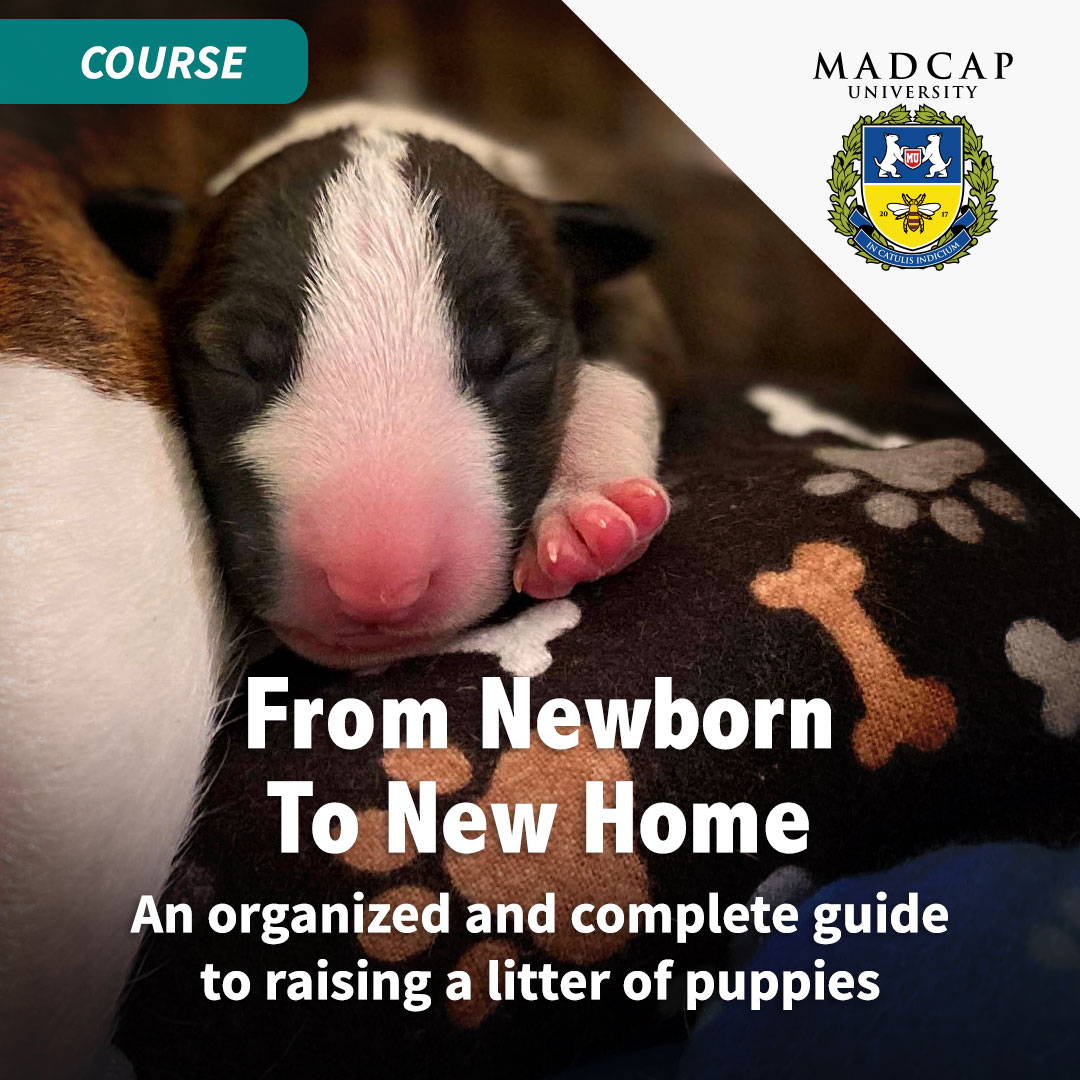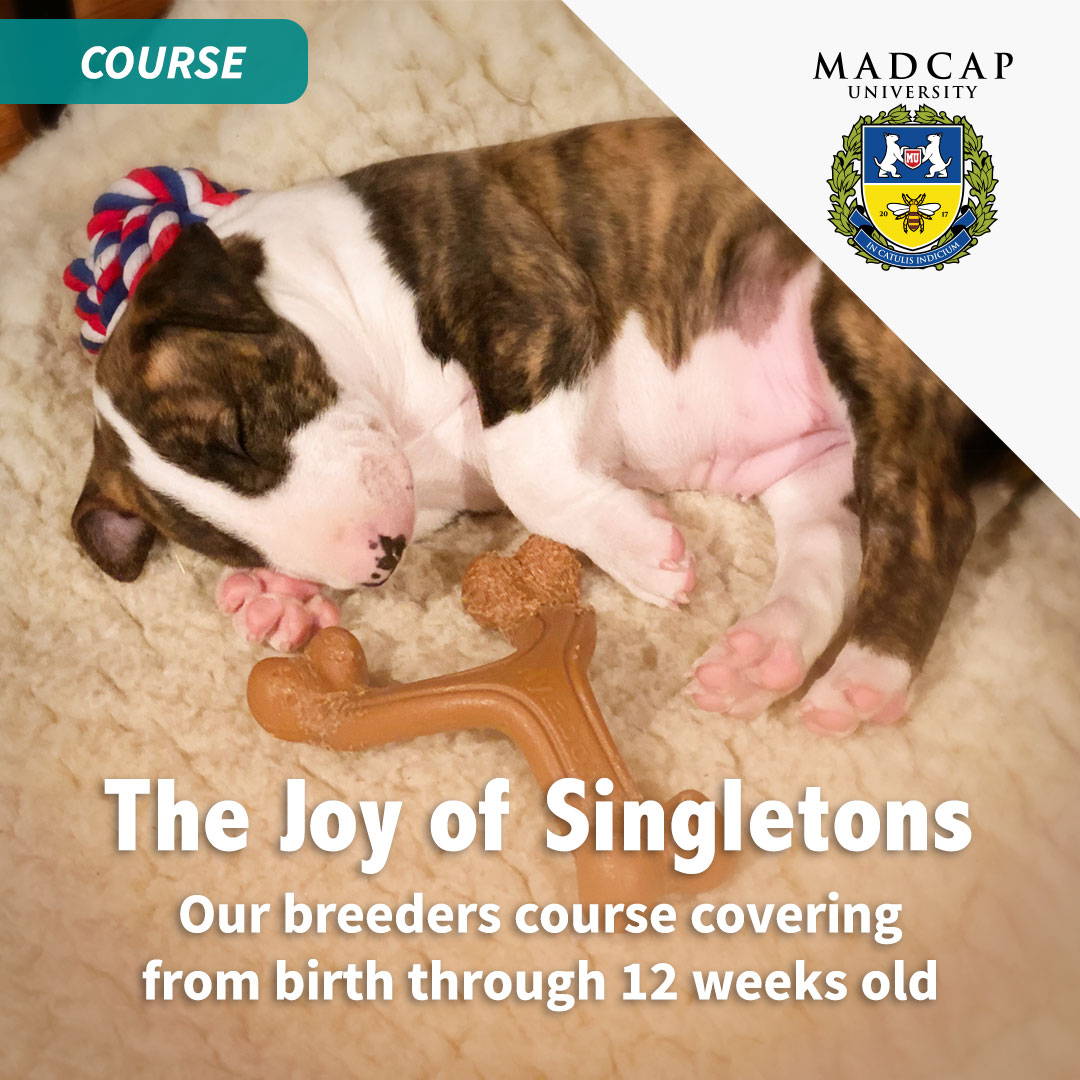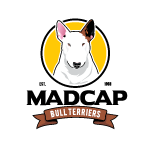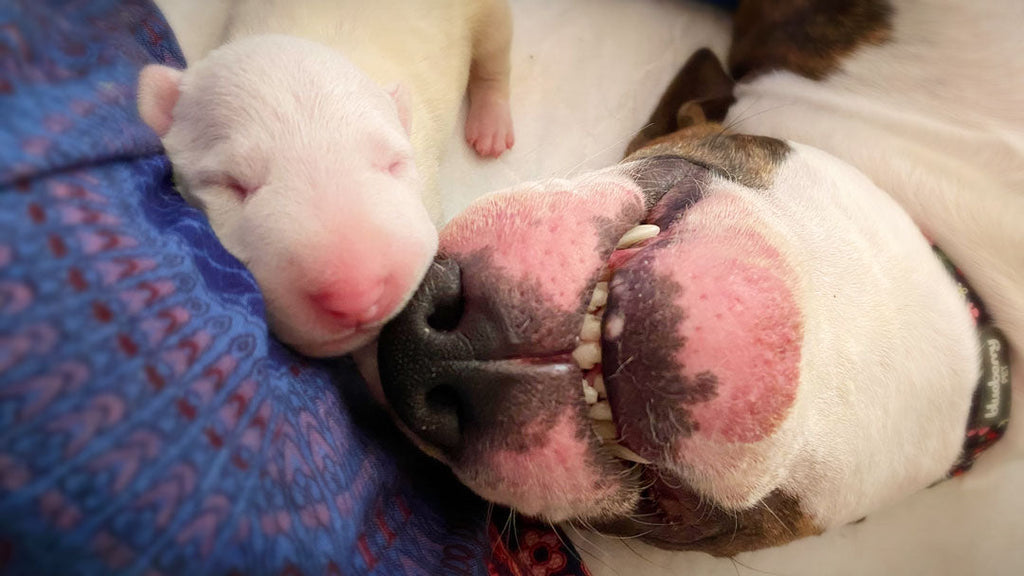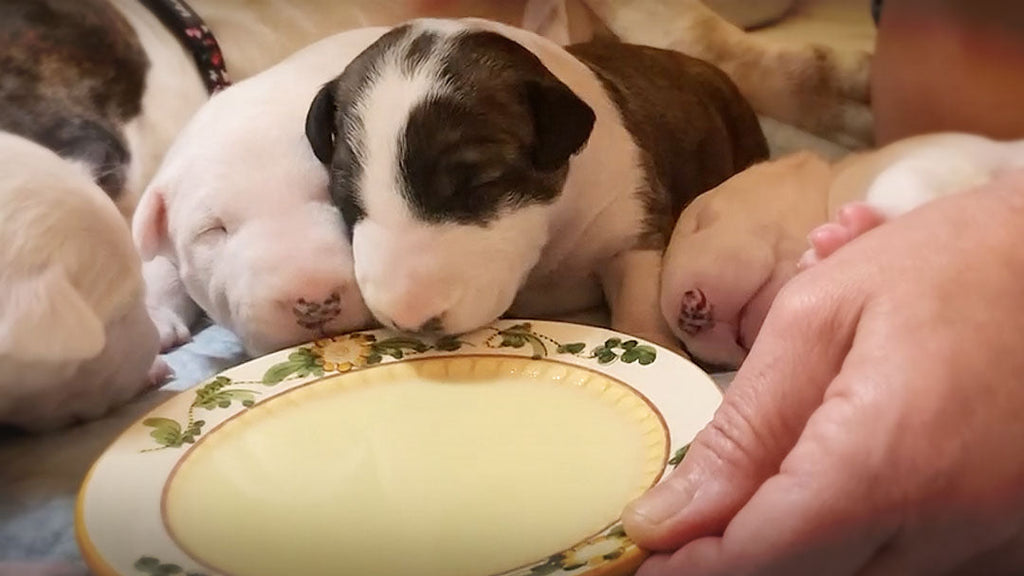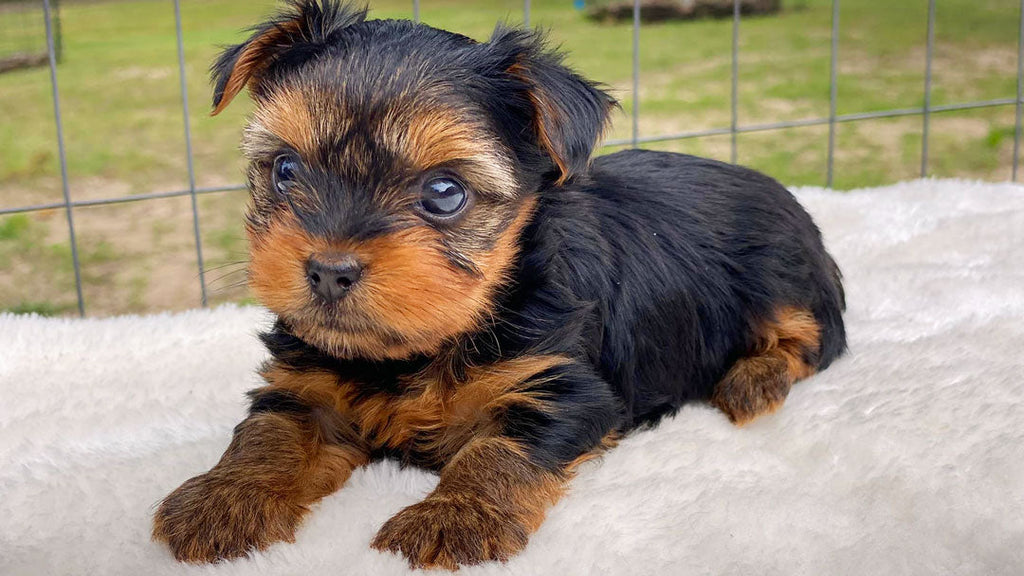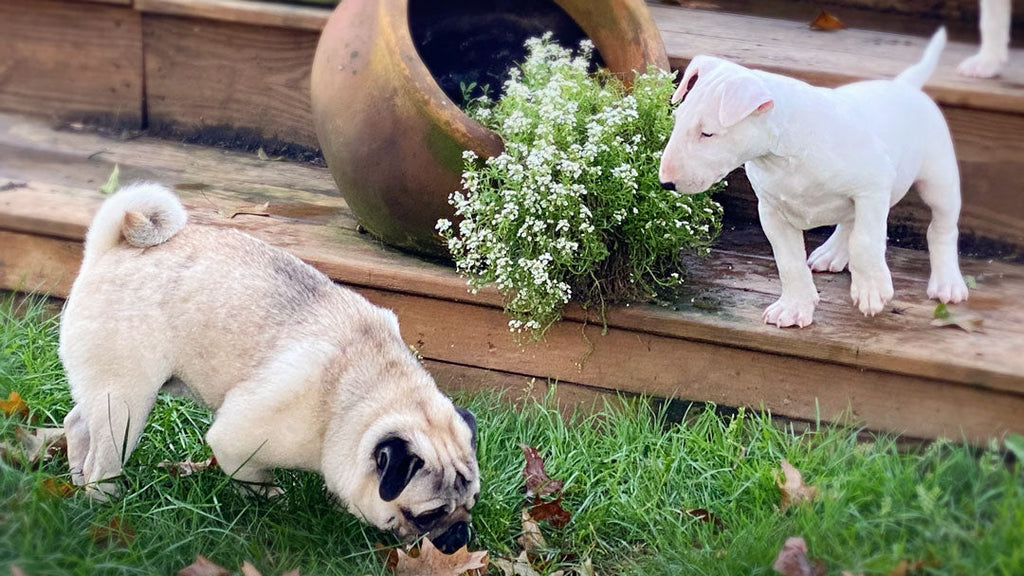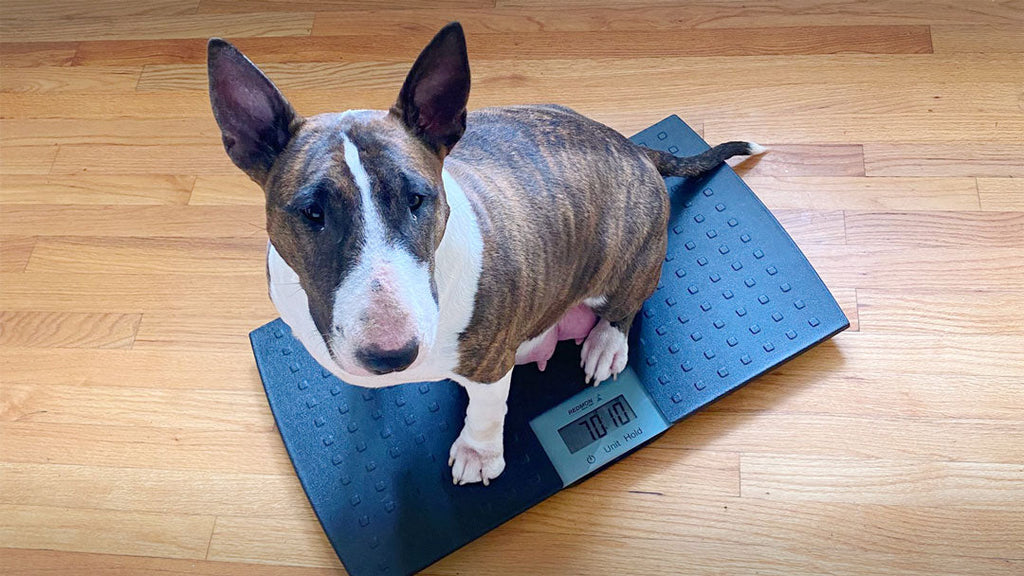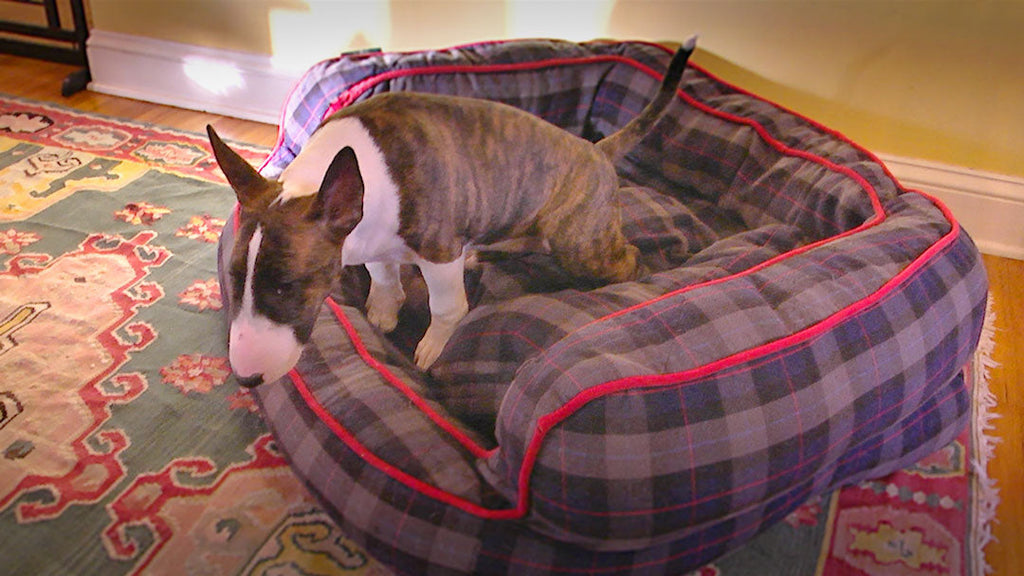Just Because She Can Doesn't Mean She Should
Supplementing Litters
The puppies have gained amazingly. We like to see them double their birth weight at ten days – they’re pushing triple. Everyone’s fat and shiny and quite precocious. They’re showing huge will to get up on their legs and walk, and a few of them are pooping on their own. We’ve now got five generations of Madcap Bull Terriers under our roof.
On the topic of supplementing a litter, as with almost everything else in dogs, there's no one right answer, it depends on a number of variables, and it varies tremendously from breed to breed. I have learned my lesson that just because a bitch CAN feed a large litter, does not mean that she SHOULD. Pippi’s mother, Daphne stayed in the box 24/7 with her second litter and they nursed in shifts just about continually. She was dripping milk and easily fed all 8 puppies - and she also wound up with eclampsia, which I hope none of you ever have to experience because it's scary as all get out.
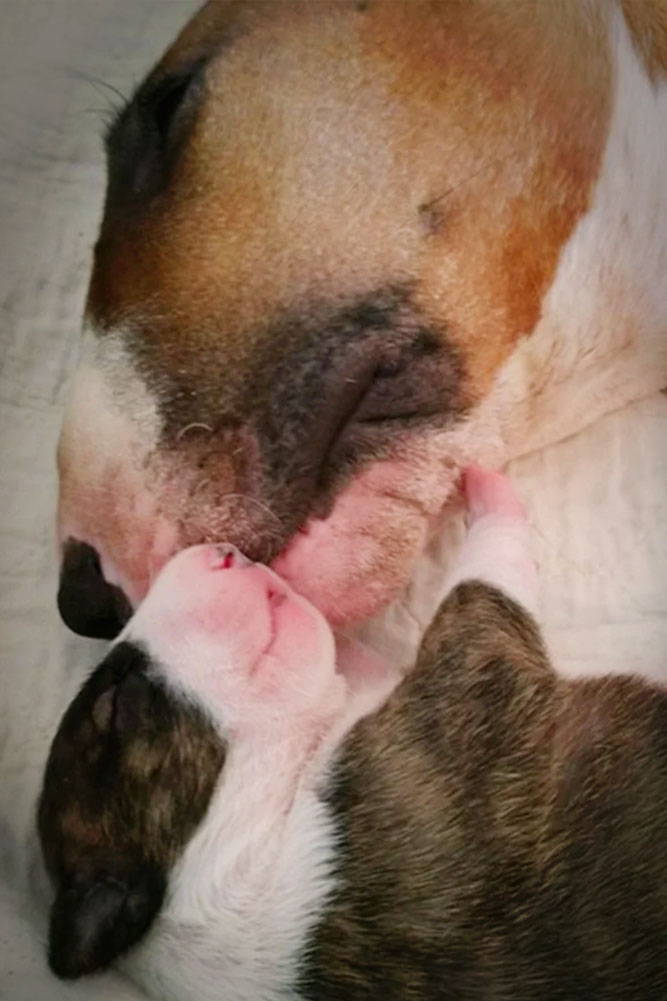
The bottom line, for me, is that Bull Terriers are not really "big litter" dogs - I think a well cared for Golden Retriever or a Rottweiler might be able to handle a huge litter and be just fine, but I don't think you can trust things will be OK with a Bull Terrier bitch and a large litter, no matter what you feed her. This is what what my breed mentors said and did with their litters and, through hard experience, I've come back to their advice. Even though Pippi is making plenty of milk, we’ve begun supplementing the puppies with goat milk.
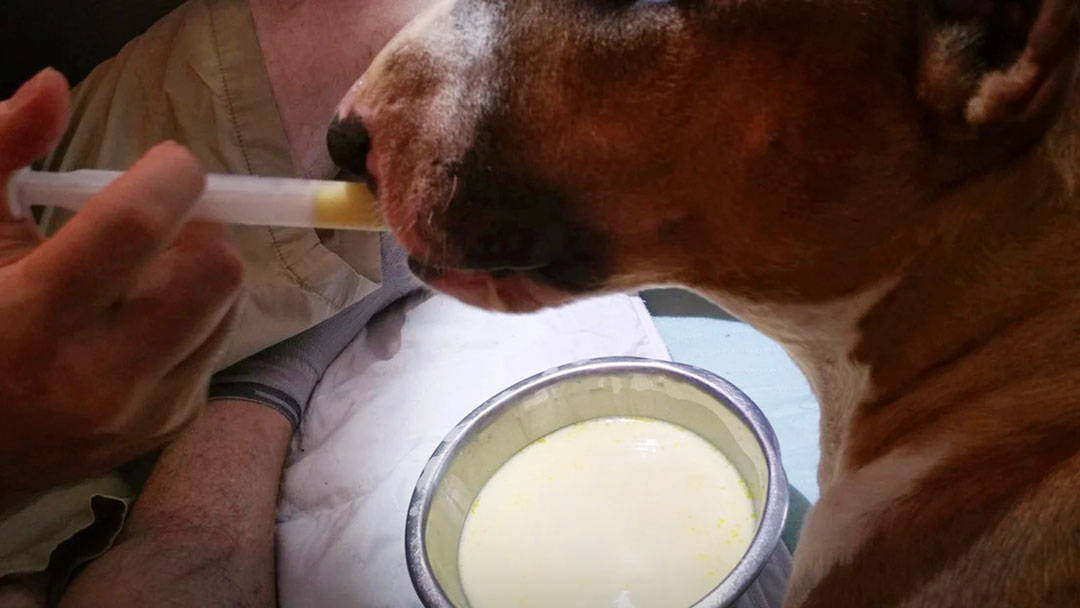
We do everything in our power to get as many calories with quality calcium into our bitches as possible, but I still believe there are some breeds that just can't safely handle nursing a huge litter
There's a behavioral aspect to this, as well. Pippi does not stay in the box continually with the puppies, so when she gets in to feed them, they literally stand up on their little legs and start swarming like screaming cockroaches. The sound and the motion are truly alarming. I’ve seen bitches give a keening pack of puppies that quick, darting back and forth look that appears to me to be more prey drive than maternal instinct. Not interested in testing that theory, so we quiet down the puppies by giving them a little goat milk delivered on a cosmetic sponge before letting Pippi back in.
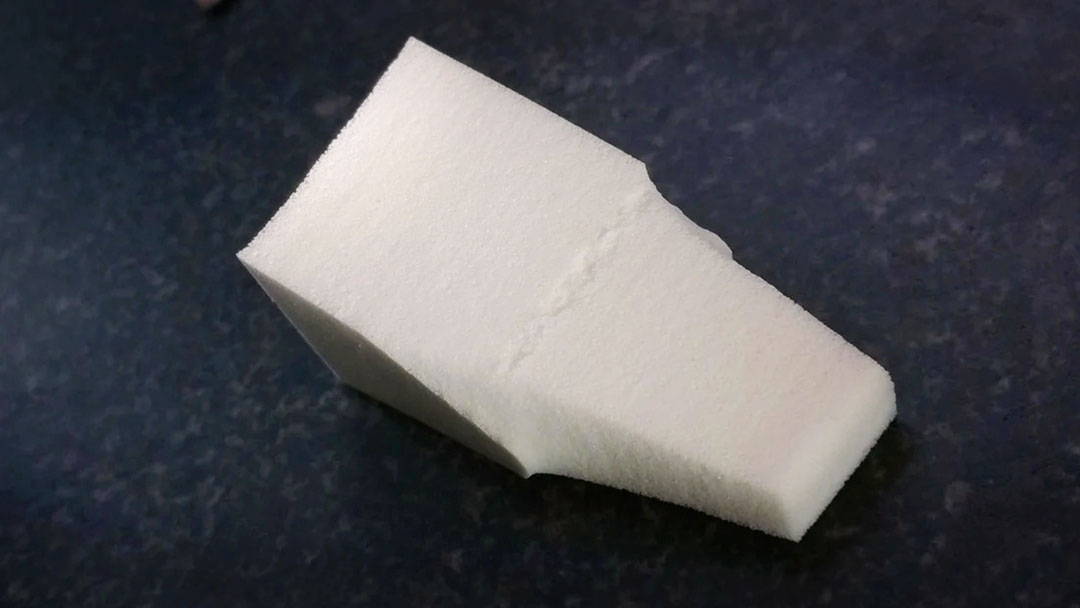
Use plain latex cosmetic sponges and trim a little off the sides to fit your puppies' mouths. I hear some sponges have added medications - don't buy that kind, buy the kind with nothing added.
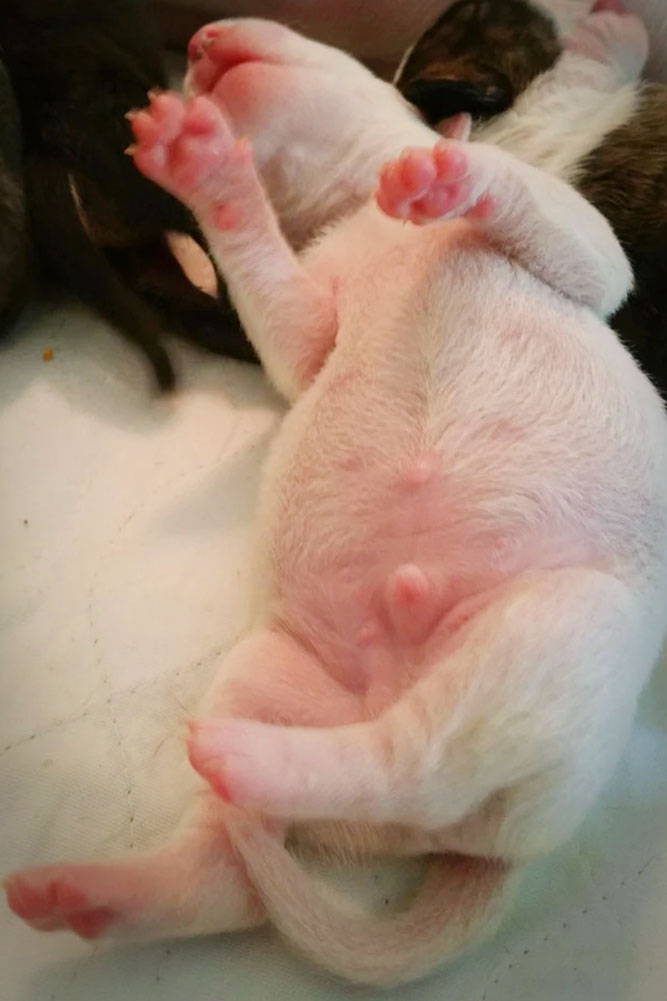
Times nine. It's just a lot of puppy to keep feeding. We're calling him Phineas, by the way.
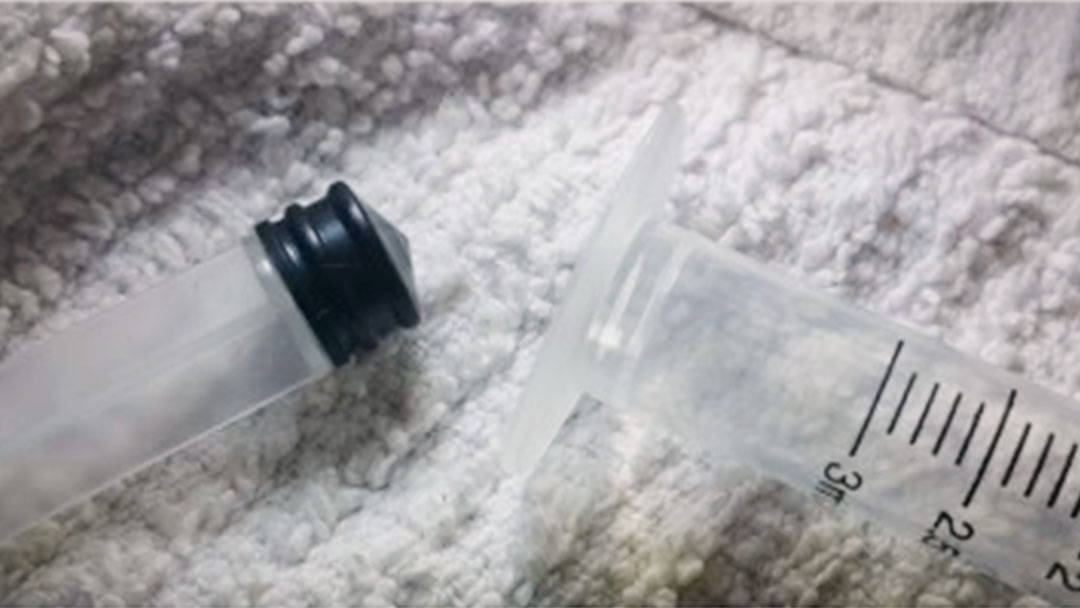
You need to find yourself a good syringe to do this. This one is a little small for the job but it has a nice rubber plunger that will glide smoothly.
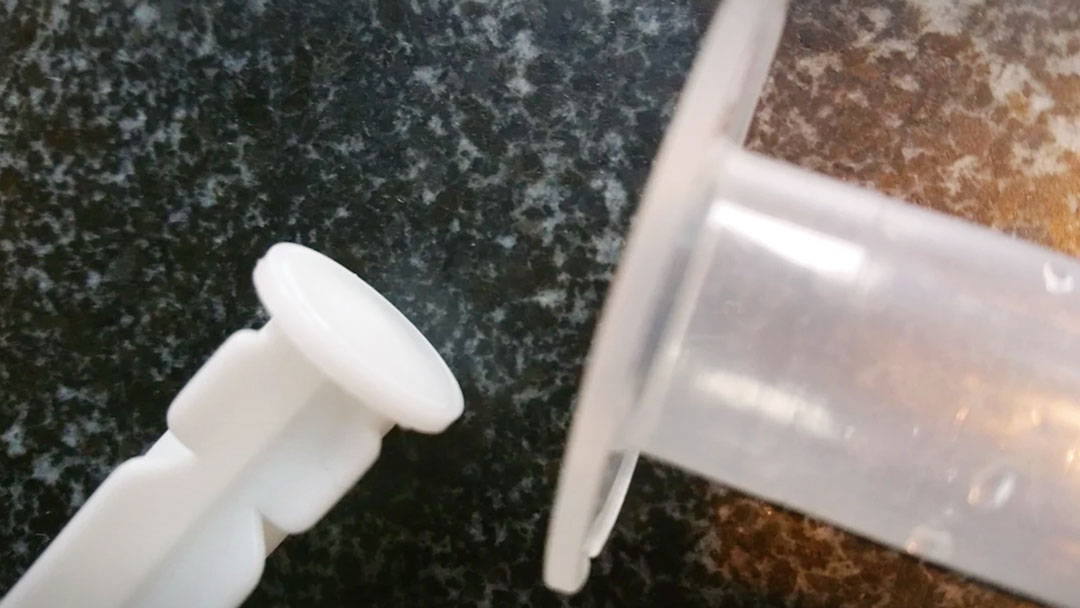
I bought this one without checking and I was furious when I started using it. It sticks and then jumps forward and shoots milk all over the place. Even though sponge feeding is relatively safe, there's always an aspiration hazard when milk starts flying around so don't buy syringes with hard plastic plungers like this one.
You want to use goats milk, not cow's milk. Goat milk is made up of smaller molecules that are easier to digest. Cow milk can really upset the puppies' tummies. I have tried goat milk "replacer" in the can and found it to be awful - gave my puppies gas and made them colicky. Go figure, puppies don't do well when fed soybean oil. If you were feeding an orphaned puppy, goat milk might not be enough - at least not this summer goat milk which is very light. In the fall the milk has a layer of cream on it so you might get by with that, but if you're feeding orphaned puppies, my suggestion is to get a good homemade milk replacer recipe and skip the canned/powdered stuff.
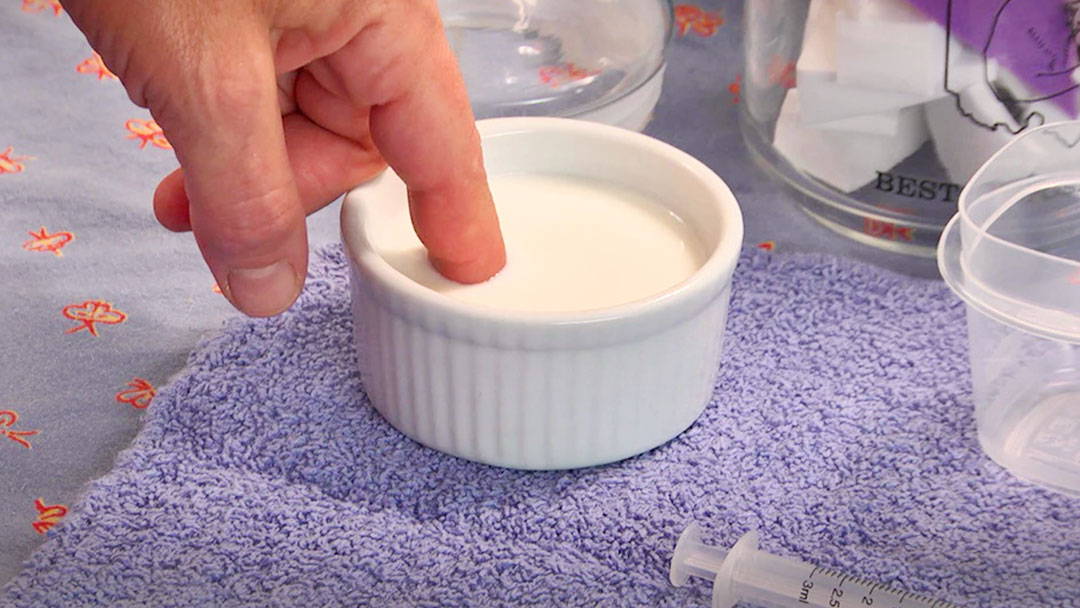
The milk should be just warm when you feed the puppies. I like to use a ceramic bowl as it seems to keep the milk at a good temperature for longer.
Here's a little film we made so you can see the mongol hordes in action, and how sponge feeding them knocks them back to, if not civilized, at least manageable.
A couple of tips about sponge feeding:
- I fed the puppies with a sponge when they were two days old and they took to it right away without question. But I did not sponge feed them from day 3-8. When I tried to sponge feed them again at nine days old, they were having none of it. The trick, I found, is to wait it out. I pick each puppy up, open their mouth a little and put the sponge in so some milk gets on their tongue. If they nurse, fantastic. If they don't, they get to go back in the pile and reflect on their hunger. I rotate through them this way and find that most of them will take the sponge on the second try.
- My puppies much prefer the smaller sponge - it's more flexible and I imagine more like a real teat. However, I'm not convinced that they couldn't suck it right down their throats if given a decent chance. I keep a firm grip on the sponge and I also find that resting my fingertips on their gums gives them something to push against, which they seem to like.
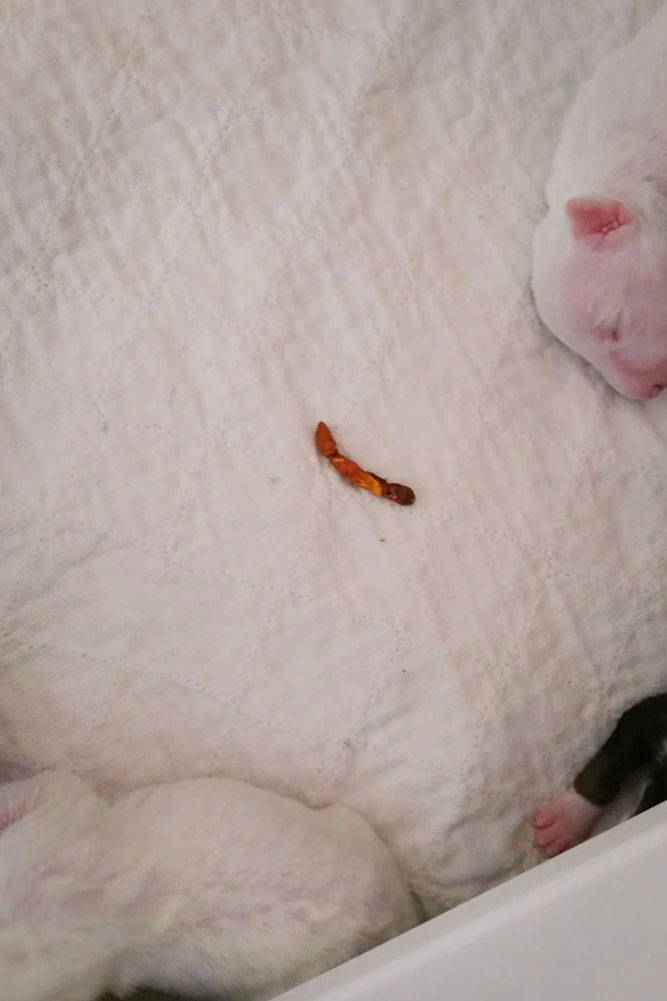
Someone took this prodigious crap all by himself
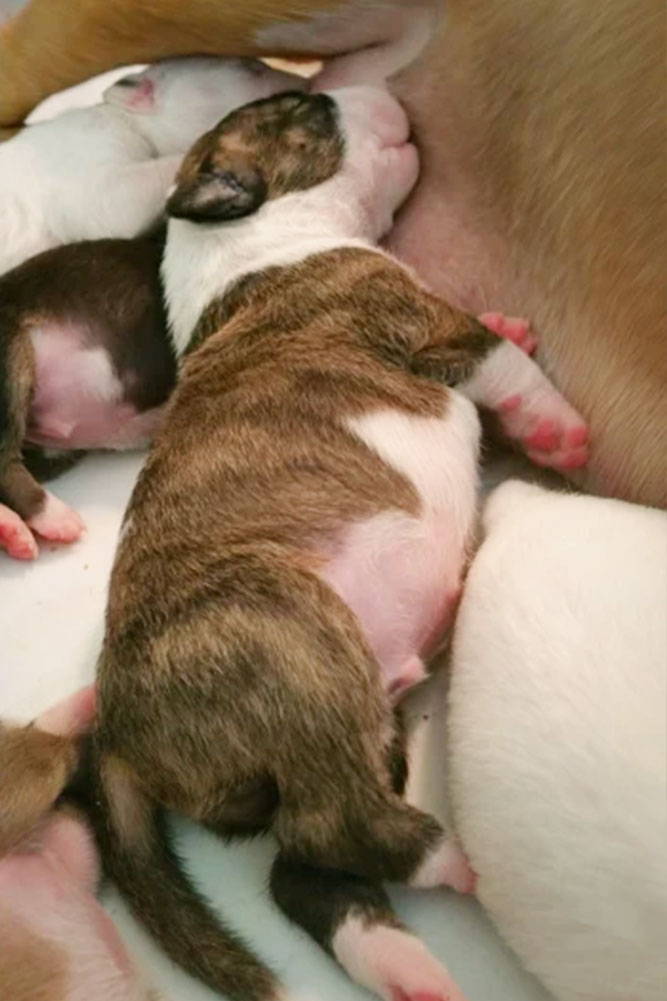
I have dug him out from under Pippi many times in the past ten days.
I know that some breeders of other breeds would be horrified to hear that we crate our novice moms between feedings, but if you want to keep an entire litter of Bull Terrier puppies alive, it’s usually necessity. I can’t tell you how many stories I have heard where the bitch was doing so well with her brood that the breeder thought she could get up and take a quick shower – and came back to a dead puppy that mom stepped on/lay down on and crushed. So if we want ANY sleep or bio breaks in the first 2 weeks, we need to crate our bitches or risk losing puppies. There are always exceptions to the rule, of course, and I’ve heard of (and had) some great Bull Terrier moms, but I don’t think it’s the norm.
This topic points up the importance of having a breed mentor, as opposed to a general mentor when it comes to whelping litters. The variations between breeds is HUGE (and wonderful, and fascinating) and you do need to have someone in your breed brief you on the peculiarities of your breed when it comes to raising a litter.

This article was originally updated on puppyculture.com in 2015
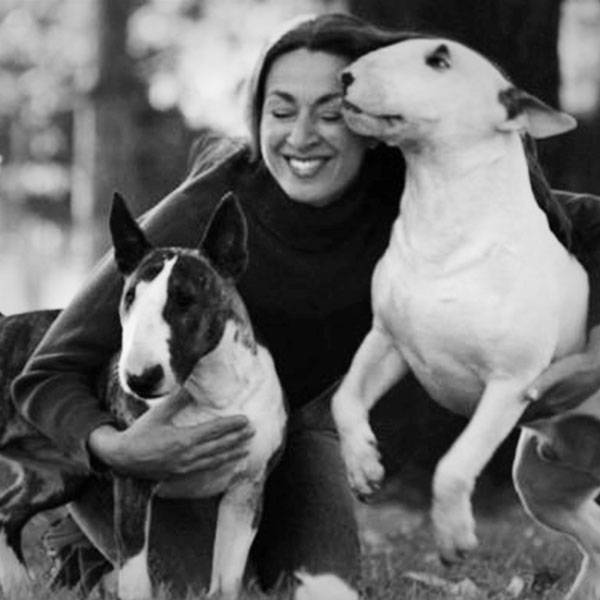
About the Author
Jane Messineo Lindquist (Killion) is the director of "Puppy Culture the Powerful First Twelve Weeks That Can Shape Your Puppies' Future" as well as the author of "When Pigs Fly: Training Success With Impossible Dogs" and founder of Madcap University.
Jane has had Bull Terriers since 1982 and she and her husband, Mark Lindquist, breed Bull Terriers under the Madcap kennel name.
Her interests include dog shows, dog agility, gardening, and any cocktail that involves an infused simple syrup.

